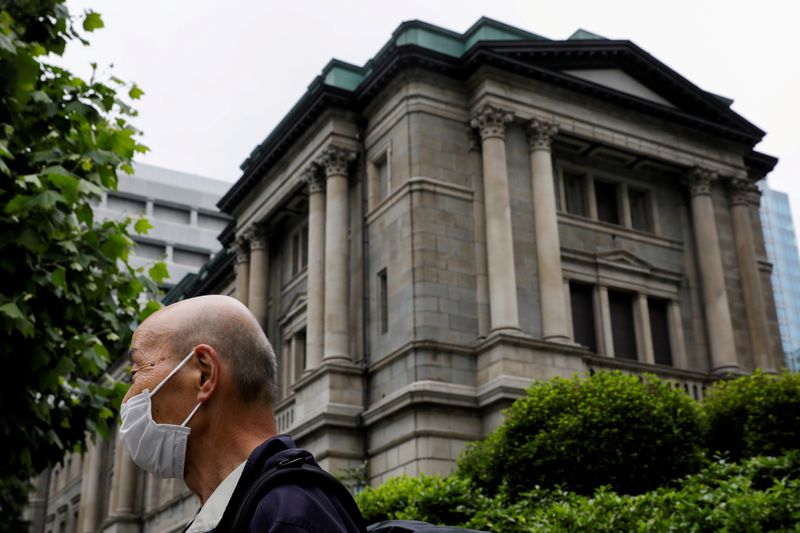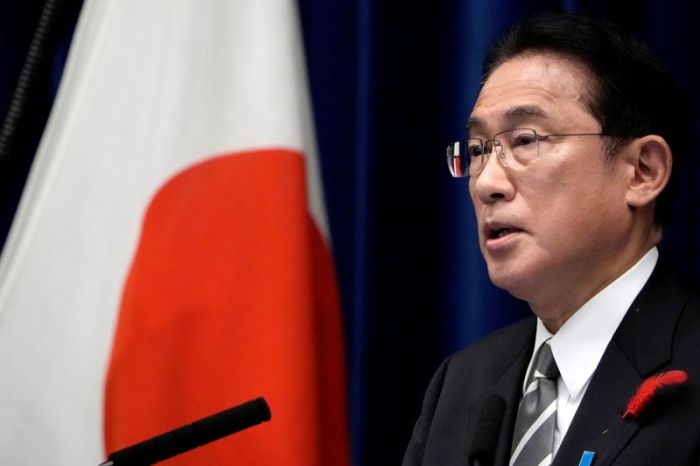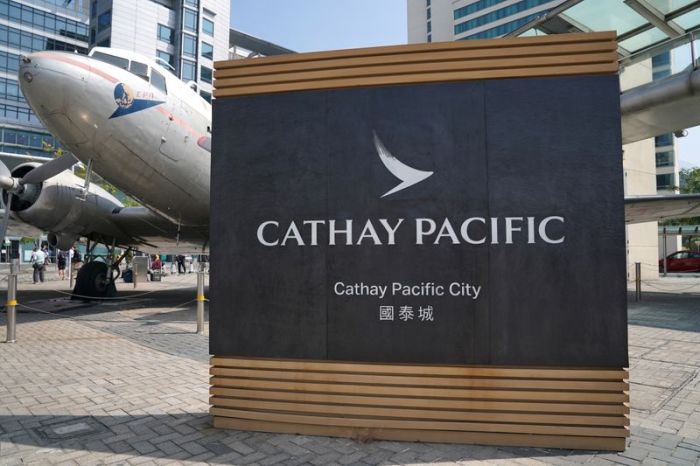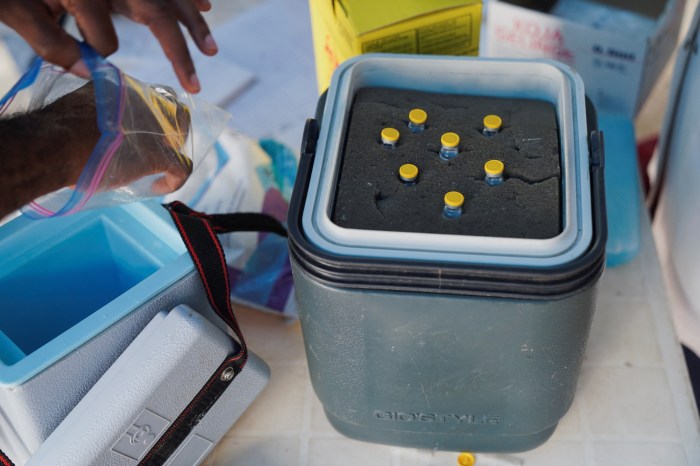(Reuters) -Japan unveiled a record $490 billion spending package on Friday to cushion the economic blow from the COVID-19 pandemic, bucking a global trend towards withdrawing crisis-mode stimulus measures and adding strains to its already tattered finances.
The 55.7 trillion yen ($490 billion) package, the first to be compiled by Prime Minister Fumio Kishida, reflects the premier’s focus on distributing more wealth to households.
Below are the main elements of the plan:
KEY COMPONENTS AND FUNDING
* The package consists of four pillars: 22.1 trillion yen to ramp up hospital beds and medical supplies, 9.2 trillion yen for vaccine development and other steps to prepare for the next wave of pandemic, 19.8 trillion yen for cash payouts to households and subsidy to boost domestic chip production, and 4.6 trillion yen for public works and disaster-relief projects.
* Of the expected 55.7 trillion yen in total spending, 31.9 trillion yen will be funded by an extra budget to be submitted to parliament this year.
* The government will tap 4.5 trillion yen left over in reserves for emergency pandemic spending, as well as left-over money from previous stimulus packages to fund part of the cost.
* Much will depend on how much the government can scrape together from such funds. But some analysts and government officials say the new package could require Japan to sell additional bonds of around 10 trillion yen.
* The government estimates spending from the package will boost Japan’s economy by around 5.6% with most of the effect appearing this fiscal year and the following year ending in March 2023.
* The government called for cooperation by the Bank of Japan in supporting growth, signaling its desire for the central bank to maintain ultra-easy policy and pandemic-relief loan schemes.
COVID-19 COUNTERMEASURES
* The government will pay up to 2.5 million yen each to smaller firms that saw sales slump from the pandemic, and extend until next March financial support via state-backed loans.
* Japan will resume a discount campaign promoting domestic tourism to help hotels and airlines hit by the pandemic.
* The government will set aside 5 trillion yen in reserves next fiscal year for emergency spending to combat the pandemic.
OTHER SPENDING
* The government will subsidise oil refiners in hope of capping wholesale gasoline and fuel prices to cushion the blow to households and firms from rising oil costs.
* Families with children aged 18 or below will receive payouts totalling 100,000 yen per child under a scheme that sets an annual income cap of 9.6 million yen.
GROWTH STRATEGY
* The government will create a 10 trillion yen fund for universities to spend on technological and scientific research, and begin investing some of the money in markets by the March end of the current fiscal year.
* It will set aside 500 billion yen in subsidies and craft legislation to build domestic chip factories and strengthen supply chains. It also aims to spur private investment into storage battery production.
* Japan will beef up tax breaks to spur companies to raise worker pay, and raise state-set wages for nurses, medical care workers and nursing home staff.
* Japan will set up a green innovation fund and pursue regulatory reform to achieve carbon neutrality in 2050.
* It will subsidise purchases of electric vehicles and pledge to have them account for all new cars sold in 2035. It will also promote electric and hydrogen charging points.
* The government will strive to realise “digital” cities in which technology will make working arrangements more flexible, and develop local 5G networks, data centres and drone delivery networks.
($1 = 114.2500 yen)
(Reporting by Tetsushi Kajimoto, Daniel Leussink and Leika Kihara; Editing by Stephen Coates)

























